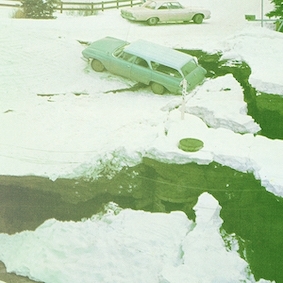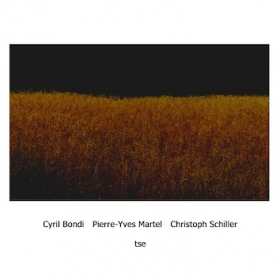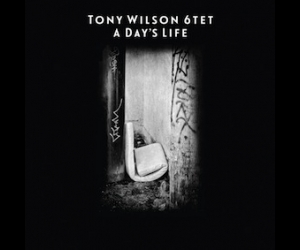Pierre-Yves Martel is a musician and sound artist of the greatest subtlety, which is evident in his choice of a principal instrument, the viola da gamba, a Renaissance–baroque instrument roughly equivalent to a cello, but one that has six strings and frets—guitar-like features that lend it a unique flexibility in the context of improvised music. These two recordings present Montrealer Martel in two distinct trios with European musicians, ideal partners possessed of both an openness and subtlety equivalent to Martel’s own. The result in each case is spare, thoughtful music focused on a fundamental identity, tones and sounds interacting with one another and the air.
Carl Ludwig Hübsch (tuba, objects, pitch pipes), Martel (pitch pipes and synthesizer, as well as viola da gamba) and Philip Zoubek (prepared piano and synthesizer) have been performing together and touring annually since 2015. On Otherwise the trio members employ their varied instruments in two improvisations that emphasize fundamental relations with time and space. A strange dichotomy arises: the sounds here have an uncanny purity, yet are difficult to assign to a source. Is a resonant passage of tuned percussion a prepared piano or a synthesizer? Is a high-pitched clicking sound the unlikely product of the valves of a tuba? The only response is a willing surrender to the ineluctable richness of it all. When the three musicians converge in a quiet swarm near the end of Likemind, the longer of the two pieces, the bowed tremolo of the viola da gamba, the bending tones of the tuba, and the struck piano frame hardly seem sufficient to create the dense, quiet roar—a wonder of acoustic activity.
In contrast to the long-developed interaction of Hübsch, Zoubek, and Martel, he, Cyril Bondi (Indian harmonium, pitch pipes, and objects), and Christoph Schiller (spinet) were getting together for the first time when they recorded tse—which, according to an interview at <anothertimbre.com>, means here in a Genevan dialect, title and dialect both emphasizing the music’s sense of heightened presence. Working as a kind of period-instrument ensemble, the three players first performed a free improvisation, after which they decided to work with a few predetermined pitches. The result is five improvisations concentrated on duration and dynamics. The near-unison tones of the instruments sometimes create subtle beat patterns, while the decays of the plucked viola da gamba and of the quill-picked spinet gently punctuate the sustained tones of the harmonium and pitch pipes. The intense focus on dynamics, from piece to piece and instrument to instrument, at times results in pieces so spare and quiet that the trio seems to be polishing silence into sound, sound into silence.
However one might balance the virtues of familiarity and novelty, it would be hard to determine which of these is the veteran ensemble and which the freshly assembled.




